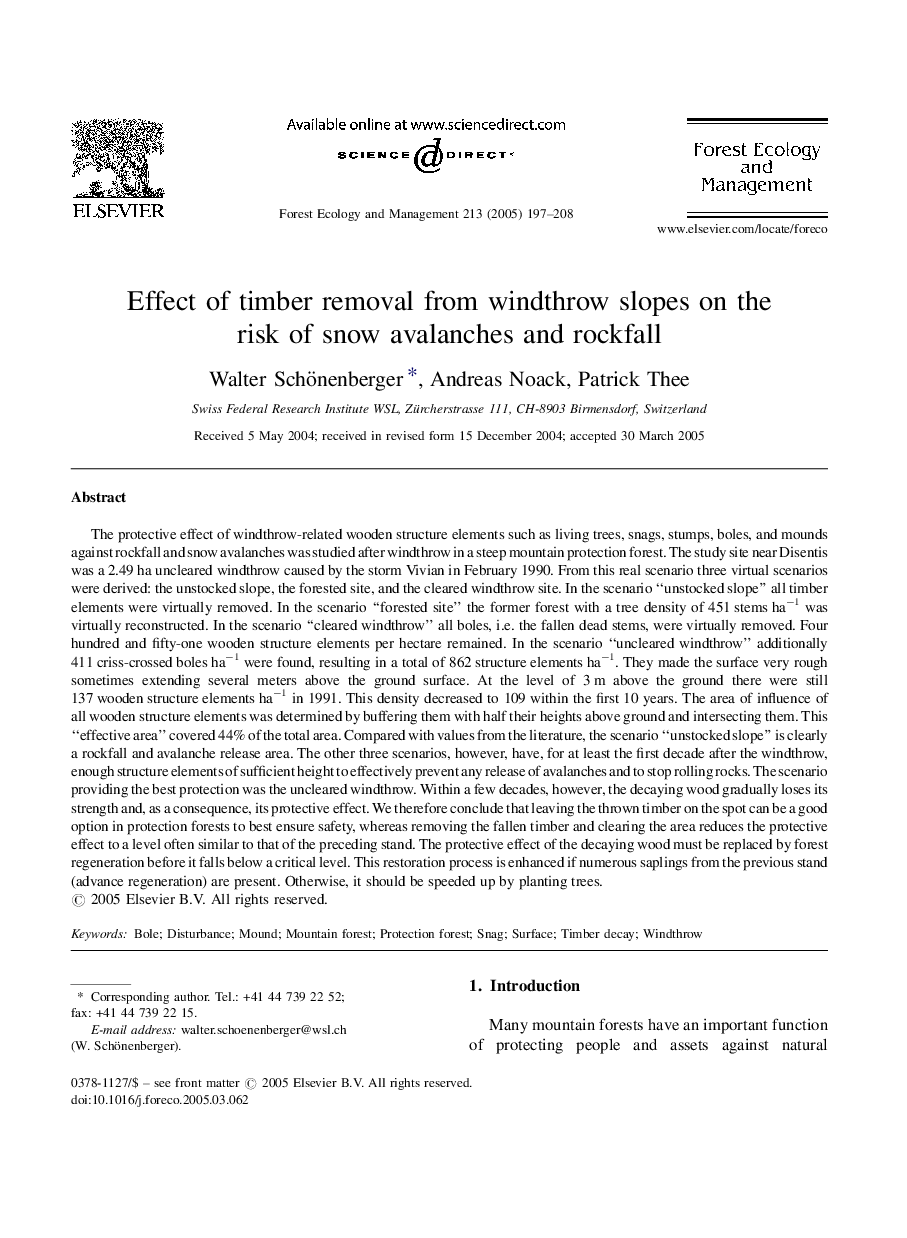| Article ID | Journal | Published Year | Pages | File Type |
|---|---|---|---|---|
| 9620274 | Forest Ecology and Management | 2005 | 12 Pages |
Abstract
The protective effect of windthrow-related wooden structure elements such as living trees, snags, stumps, boles, and mounds against rockfall and snow avalanches was studied after windthrow in a steep mountain protection forest. The study site near Disentis was a 2.49 ha uncleared windthrow caused by the storm Vivian in February 1990. From this real scenario three virtual scenarios were derived: the unstocked slope, the forested site, and the cleared windthrow site. In the scenario “unstocked slope” all timber elements were virtually removed. In the scenario “forested site” the former forest with a tree density of 451 stems haâ1 was virtually reconstructed. In the scenario “cleared windthrow” all boles, i.e. the fallen dead stems, were virtually removed. Four hundred and fifty-one wooden structure elements per hectare remained. In the scenario “uncleared windthrow” additionally 411 criss-crossed boles haâ1 were found, resulting in a total of 862 structure elements haâ1. They made the surface very rough sometimes extending several meters above the ground surface. At the level of 3 m above the ground there were still 137 wooden structure elements haâ1 in 1991. This density decreased to 109 within the first 10 years. The area of influence of all wooden structure elements was determined by buffering them with half their heights above ground and intersecting them. This “effective area” covered 44% of the total area. Compared with values from the literature, the scenario “unstocked slope” is clearly a rockfall and avalanche release area. The other three scenarios, however, have, for at least the first decade after the windthrow, enough structure elements of sufficient height to effectively prevent any release of avalanches and to stop rolling rocks. The scenario providing the best protection was the uncleared windthrow. Within a few decades, however, the decaying wood gradually loses its strength and, as a consequence, its protective effect. We therefore conclude that leaving the thrown timber on the spot can be a good option in protection forests to best ensure safety, whereas removing the fallen timber and clearing the area reduces the protective effect to a level often similar to that of the preceding stand. The protective effect of the decaying wood must be replaced by forest regeneration before it falls below a critical level. This restoration process is enhanced if numerous saplings from the previous stand (advance regeneration) are present. Otherwise, it should be speeded up by planting trees.
Related Topics
Life Sciences
Agricultural and Biological Sciences
Ecology, Evolution, Behavior and Systematics
Authors
Walter Schönenberger, Andreas Noack, Patrick Thee,
